Crankshaft configurations
Crankshaft configurations
The shape of the crankshaft is an important factor in determining overall engine balance. It also has implications for exhaust design. Here are a number of standard configurations
A conventional inline four configuration
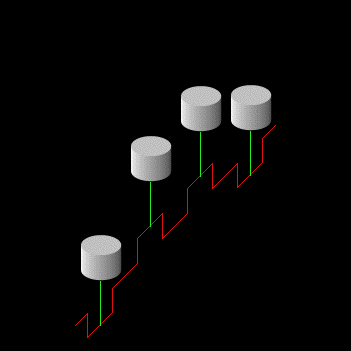 |
Firing sequence will be 1-3-4-2 or 1-2-4-3, with the sparks occurring every 180 degrees of the crankshaft. A tuned exhaust is simple with equal length pipes between the valves and where they all join. Mechanical balance is not particularly good.
A conventional inline six configuration
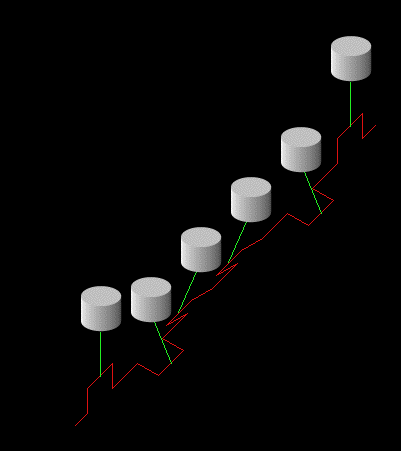 |
Firing sequence could be 1-3-5-6-4-2 or 1-4-2-6-5-3 or probably lots of others, with the sparks occurring every 120 degrees of the crankshaft. A tuned exhaust is simple with equal length pipes between the valves and where they all join. Mechanical balance is perfect.
A conventional V8
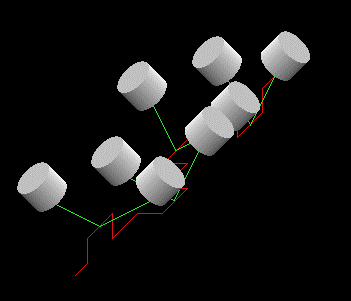 |
Firing sequence could be 1-8-4-3-6-5-7-2 (odd on one bank, even the other) or probably lots of others, with the sparks occurring every 90 degrees of the crankshaft. A tuned exhaust is simple in principle with equal length pipes between the valves and where all eight join, but packaging reasons dictate that the four from each bank join together first before joining the two sides. The drawback with doing this is that each bank does not have an even firing order, e.g. 18436572 is *--*-**- for one bank and -**-*--* for the other, so the exhaust pulses are unequally spaced. If you did want to have evenly spaced exhaust pulses joining together in sets of four, you need the end two from one bank merging with the inner two of the other bank. A plumbing nightmare, but the Rover V8 inlet manifold is configured exactly like that to give each carburettor a smooth airflow. Note that the uneven exhaust pulses give that V8 sound. Mechanical balance can be perfect if counterweights on the crankshaft are used.
A flatplane V8
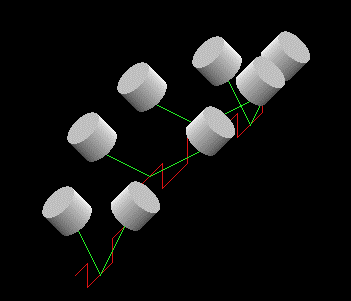 |
Note that the crankshaft is the same shape as an inline four crank, so the engine is configured as two four cylinder engines, spaced 90 degrees apart on the crank. Firing sequence could be 1-2-5-6-7-8-3-4 (odd on one bank, even the other) or probably lots of others, with the sparks occurring every 90 degrees of the crankshaft. A tuned exhaust is simple with four equal length pipes per bank between the valves and where they join, in exactly the same way that a four cylinder engine exhaust is configured. Of course it will sound like a straight four engine, rather than a V8. The price for the improved exhaust tuning is poor mechanical balance.
A boxer four
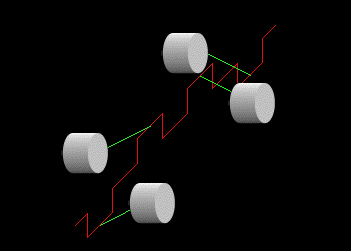 |
Note that the crankshaft is the same shape as an inline four crank. Firing sequence could be 1-3-2-4 or 1-4-2-3 (odd on one bank, even the other), with the sparks occurring every 180 degrees of the crankshaft. A tuned exhaust is only possible with equal length pipes from each valve to the collector, which is unlikely for packaging reasons. Therefore the two exhaust pipes on each bank will join together first before travelling rearwards to the final merge. Thus the exhaust pulses from each bank will be uneven. Mechanical balance is pretty good.
